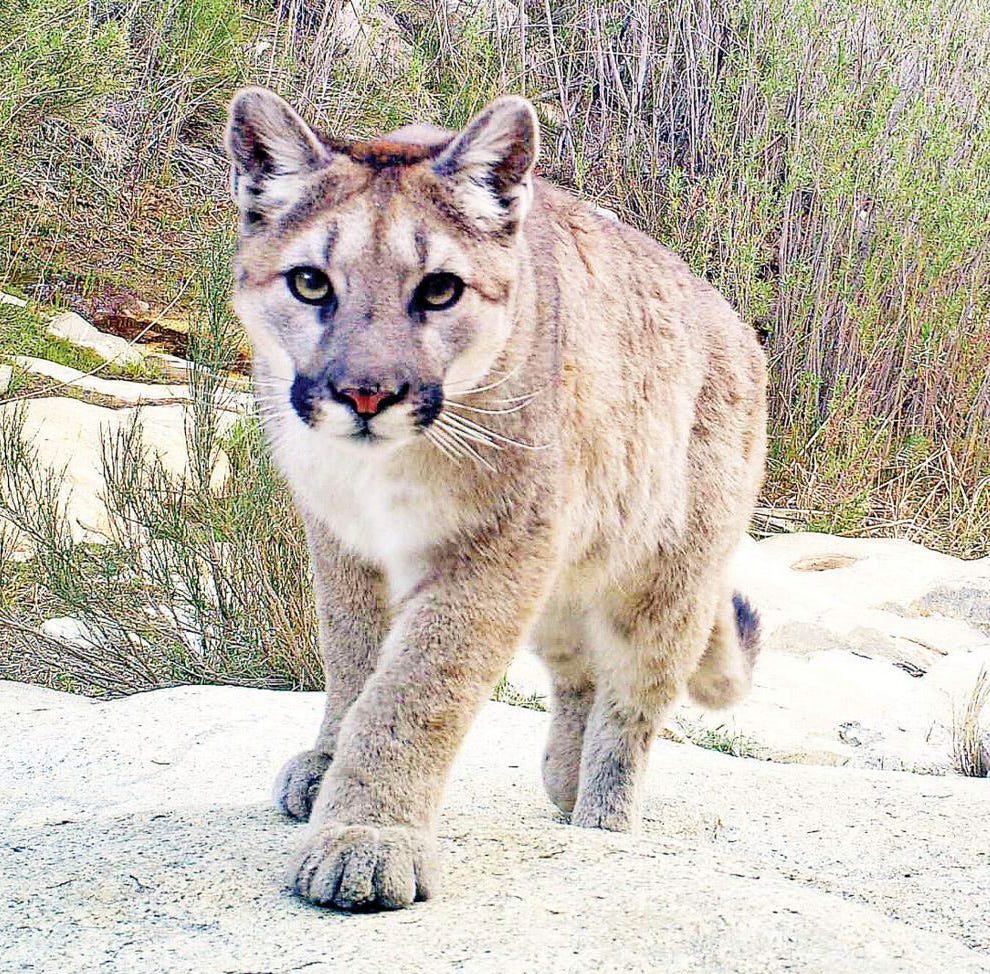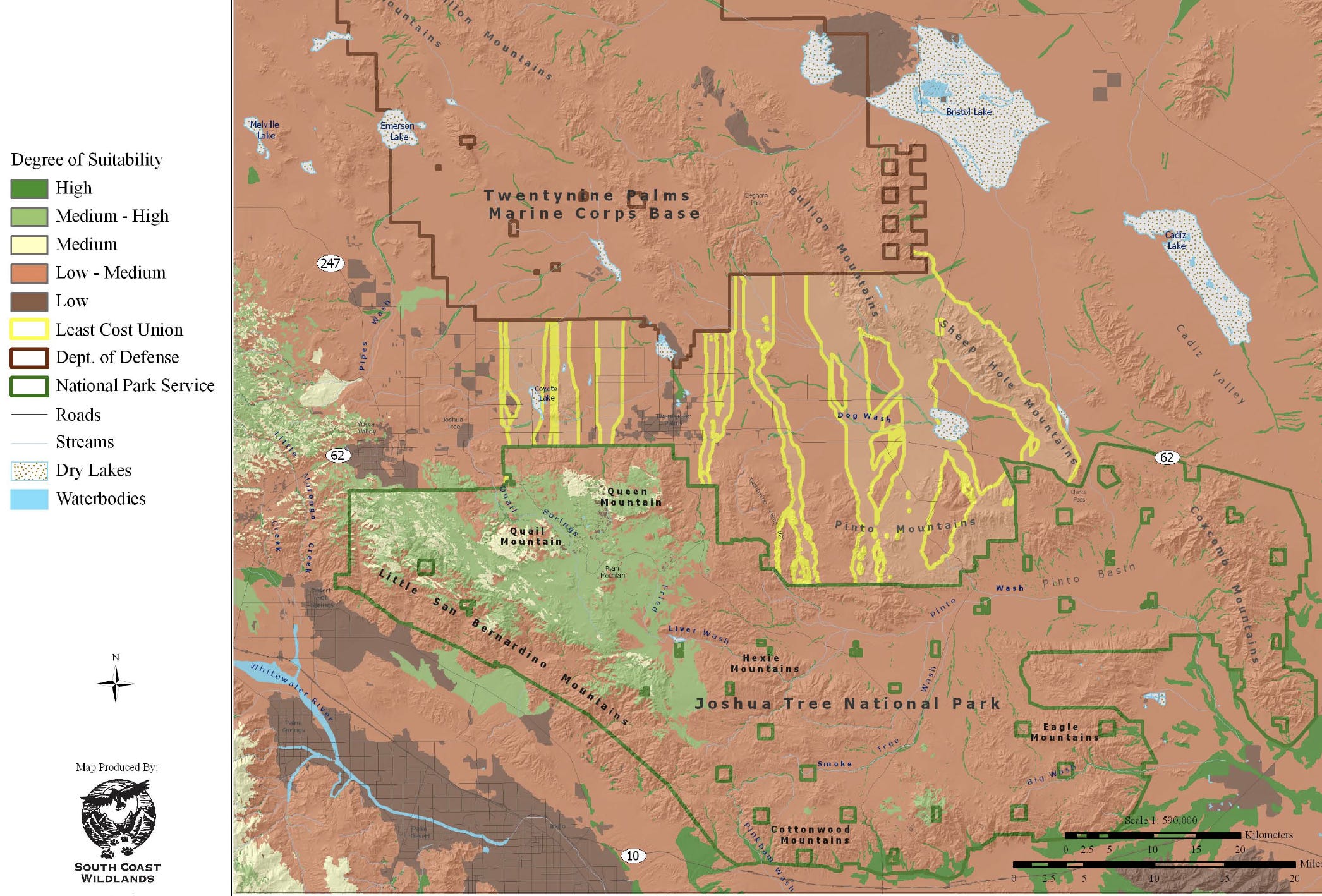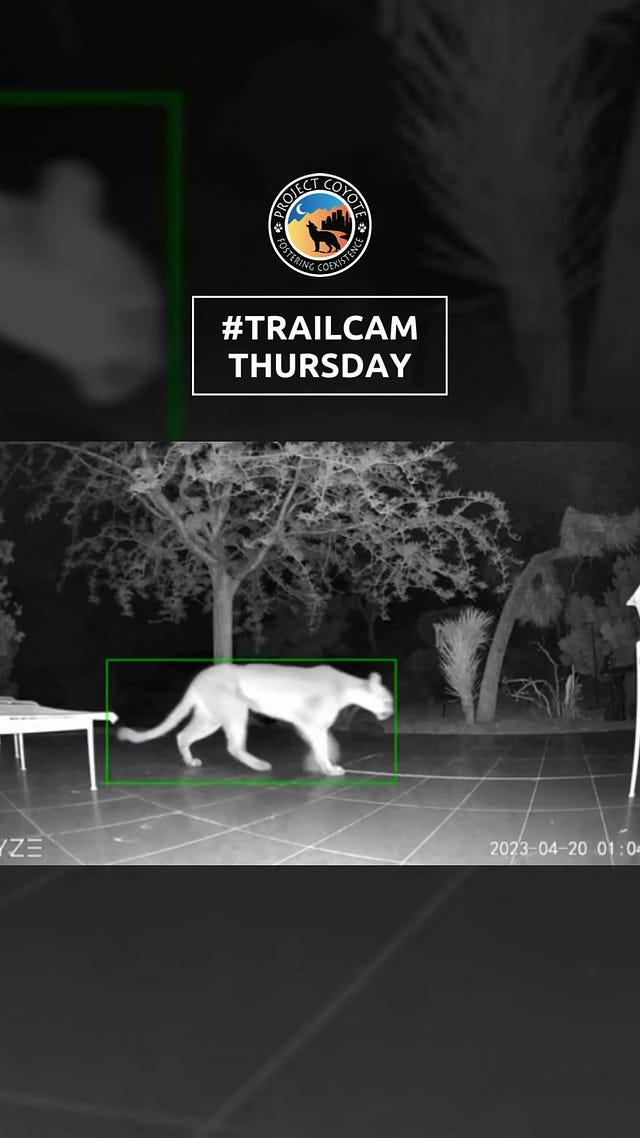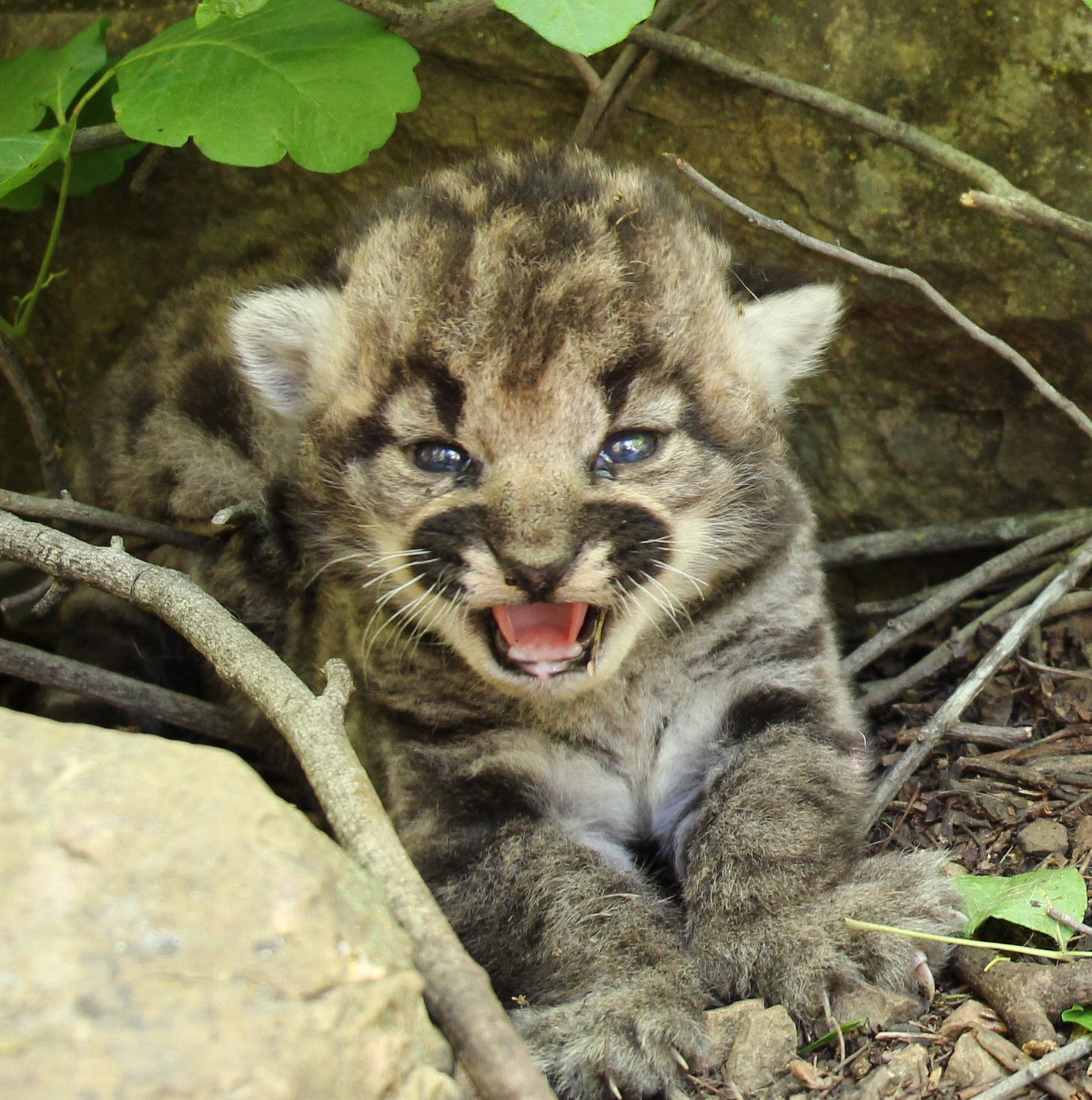WILDLIFE WEDNESDAY: Mountain lions among us
Mostly unseen, these elusive predators grace the Morongo Basin

Do you ever go for a desert walk, sit on a rock to eat a snack, and get a hinky feeling? That something is watching you? That someone might like to have you for a snack? You glance up the rocky slope at the barrel cactus and creosote: Is that a long-tailed slinky shadow slipping toward you? You’ve seen bighorn sheep upslope—could there be a mountain lion?
Probably just your overactive imagination.

And while sightings are rare, Morongo Basin features a major wildlife corridor and habitat linkage that runs through our communities linking Joshua Tree National Park, the Maine Air Ground Combat Center, the Pioneertown Preserve, and on to the Sand to Snow National Monument. A 2008 report1 shows possible mountain lion habitat in the Morongo Basin, with the most likely habitat highlighted in dark green. Mountain lions have huge ranges; a male might cover 100 to 200 square miles in his lifetime, while a female will prowl 30 to 70 miles. They need that much of a range to hunt for their food and also to avoid each other.
They also try to stay away from us. A study published in 2024 in the Santa Monica Mountains showed lions becoming more nocturnal so that they don’t interact with people and can hunt more successfully. Ellie Bollas, the study’s lead author said, “Seeing that mountain lions are flexible in their activity and sensitive to recreation is, I think, a reason we can feel optimistic that they’re willing to avoid us and want to avoid us.”
There haven’t been many mountain lions documented in Twentynine Palms, but there have long been rumors of a mountain lion along Lear and near the Fortynine Palms oasis. The Marine base’s Integrated Natural Resources Management Plan, released in 2024, shows no records of lions on base, however, and none have been reported in Twentynine Palms on iNaturalist.
But they’re around. Mountain lions have been caught on trail cameras in the Joshua Tree National Park. They have been spotted on Godwin Road in Wonder Valley and in the highlands of the village of Joshua Tree.

 Tiktok failed to load.
Tiktok failed to load.Enable 3rd party cookies or use another browser
Two mountain lions were hit by vehicles in Yucca Valley last year. Homeowners found an injured five-year-old female mountain lion in June as she lay in the shade of their residence in Yucca Valley. Sadly, she didn’t survive. Another female mountain lion was more lucky and was trapped and treated for wounds and dehydration at the San Diego Humane Society Ramona Wildlife Center. Once she recovered, she was released into the San Bernardino County wilderness in November.
Because our roads are perils to mountain lions and other wildlife, the Mojave Desert Land Trust has bought 43 acres on either side of 62 in Morongo Valley, where wildlife density is higher because of water almost always present at Big Morongo Canyon Preserve. They will be working with CalTrans to develop a wildlife crossing.
If you’re lucky, maybe someday you’ll see a mountain lion flicker across highway 62 in the twilight, chasing after prey: a coyote or a jackrabbit, maybe, or a bighorn sheep wandering away from the 49 Palms oasis. Slow down so you don’t hit it and feel grateful that you’ve had a chance to see one of our desert’s most amazing predators.

South Coast Wildlands, “A Linkage Design for the Joshua Tree-Twentynine Palms Connection,” 2008.
Leave your thoughts in the comments below. Please note that we do not allow anonymous comments. Please be sure your first and last name is on your profile prior to commenting. Anonymous comments will be deleted.
Feel free to share this article!
Please subscribe!


So my neighbor just knocked on my door claiming that a mountain Lion was spotted next to my fence last night (not sure she’s correct) but is it even possible? I live next to the Morongo state park off of Morongo Way? Where can I go to see if the lion is being tracked or if there were any actual spottings in this area??
So my neighbor just knocked on my door telling me that a mountain Lion was spotted next to our fence last night, IF she’s correct where can I go to see if that was true or if it’s being tracked? I live in Morongo valley near the state park off of Morongo Way…